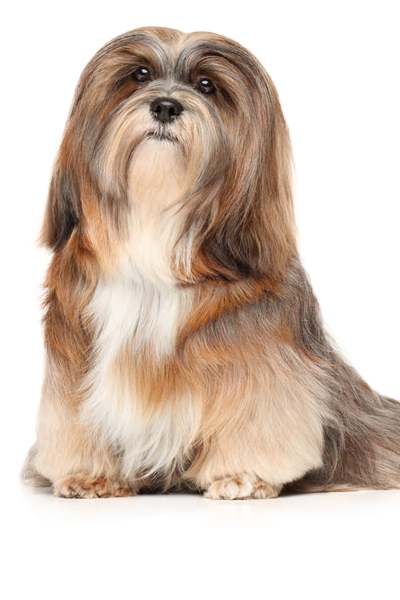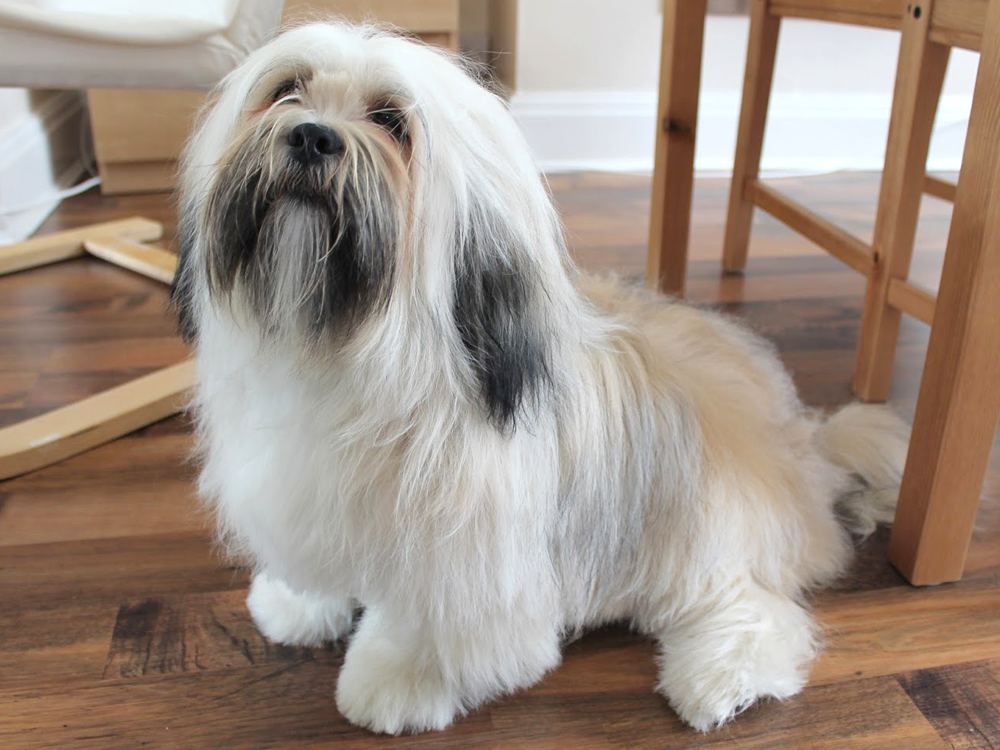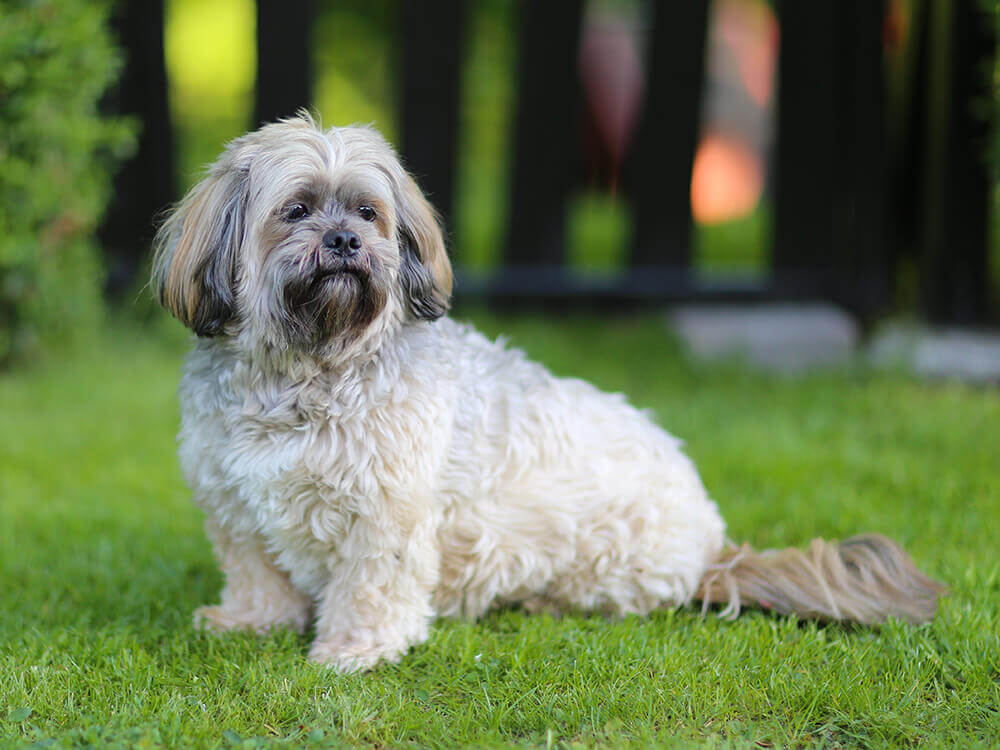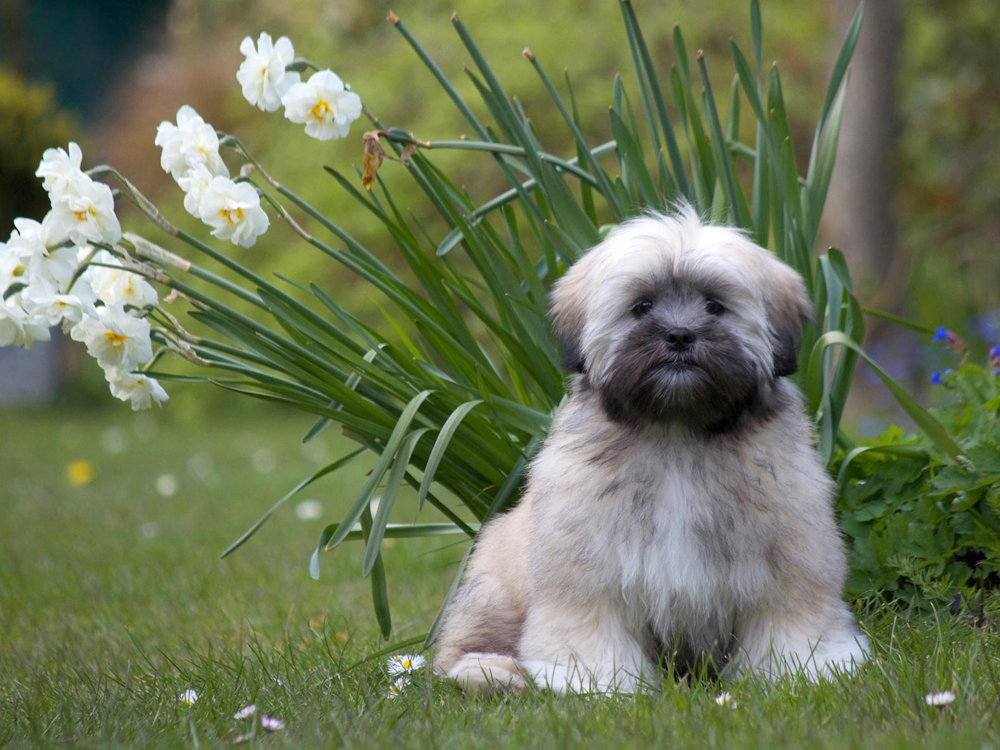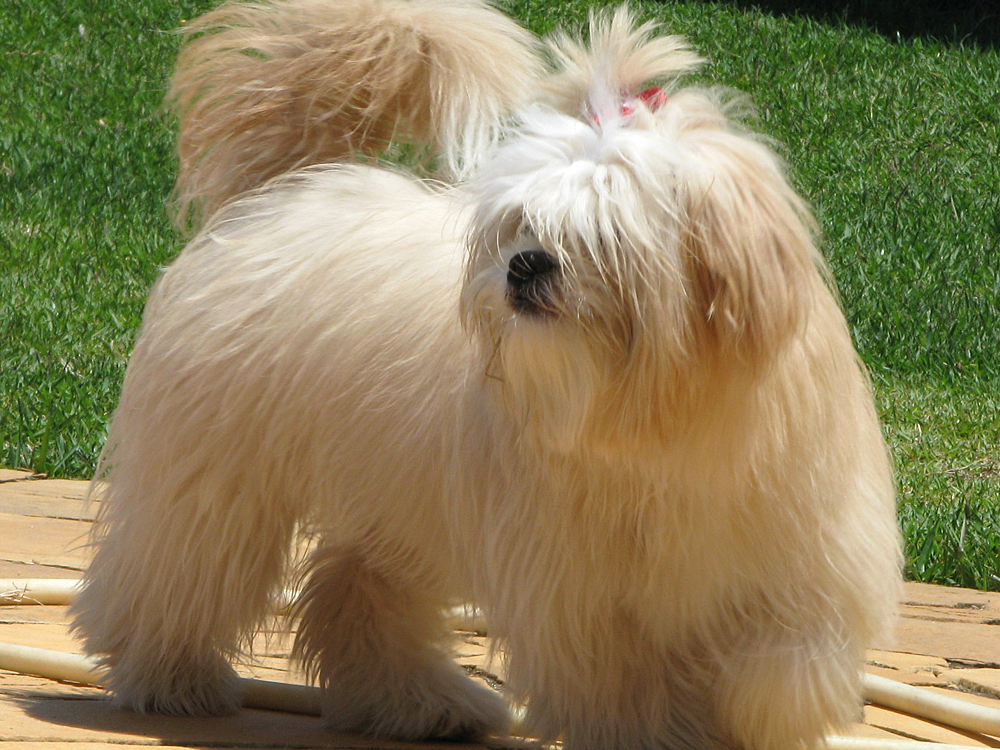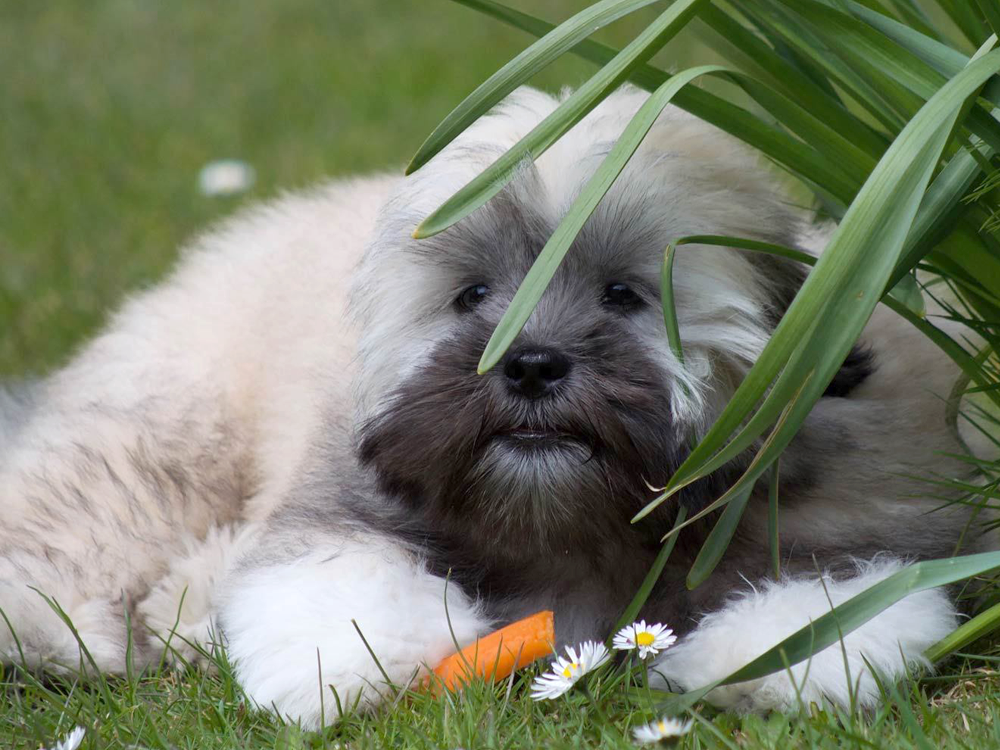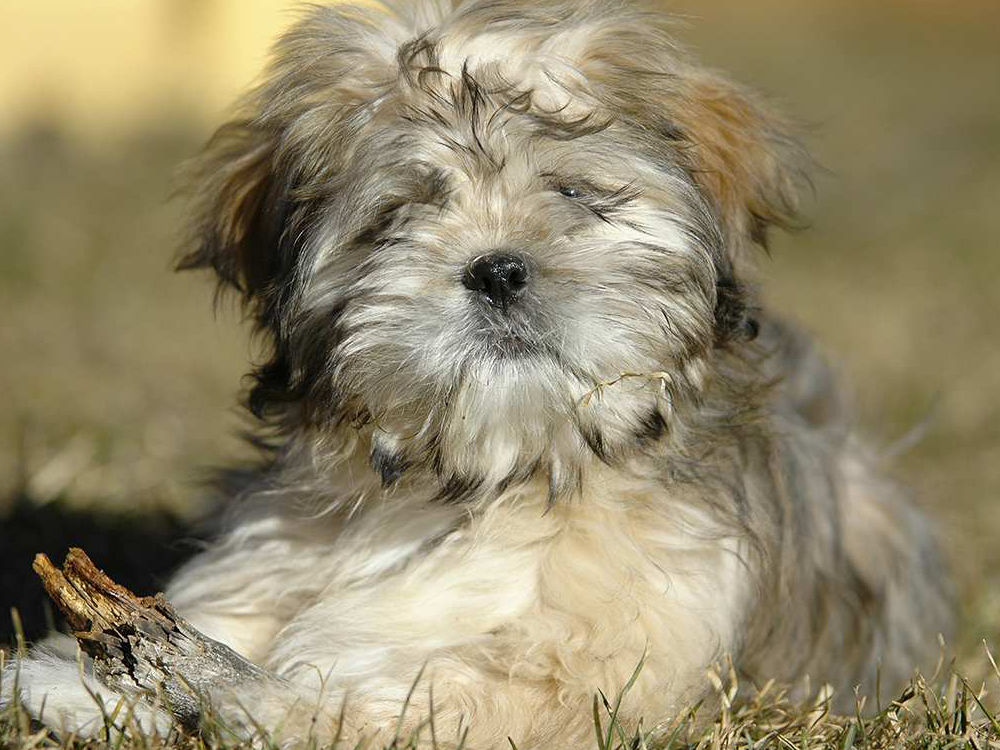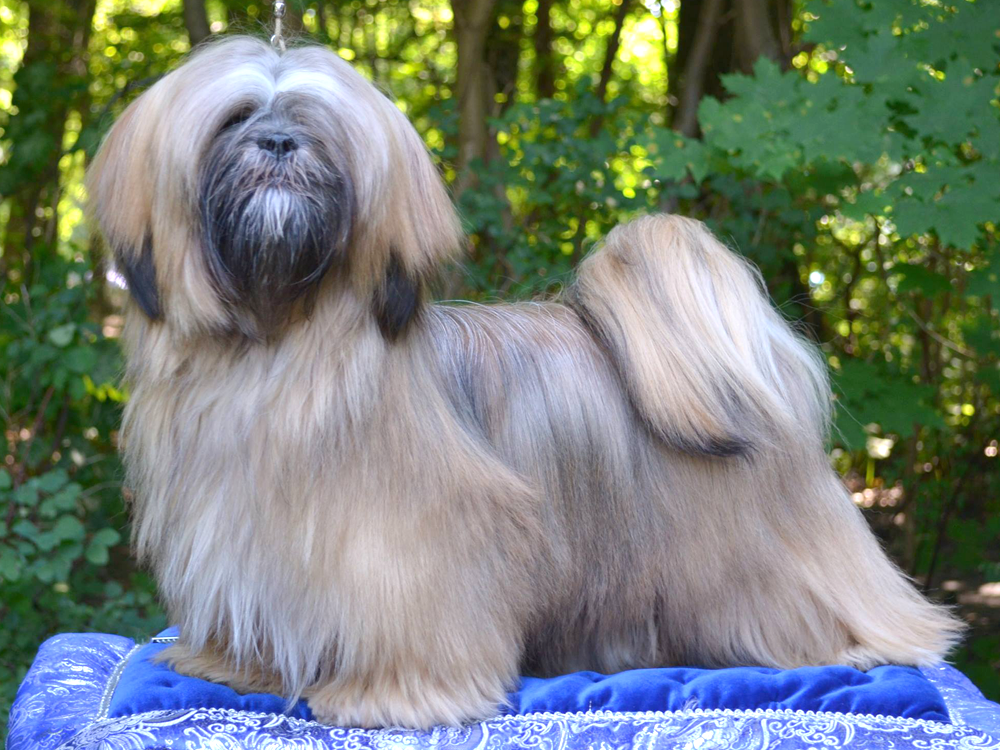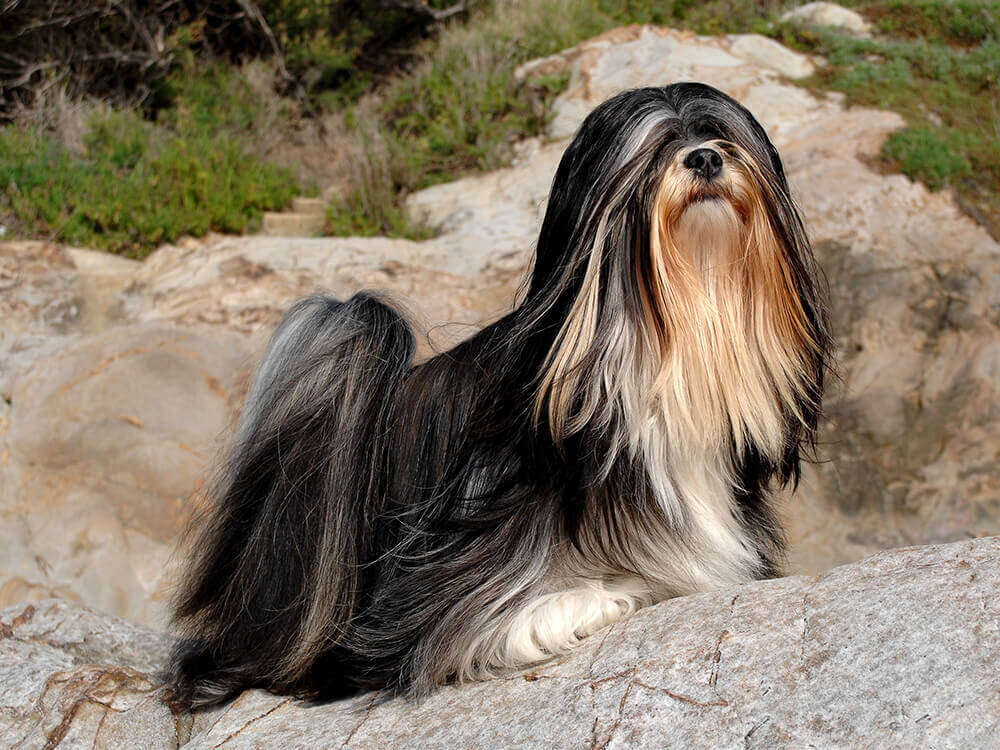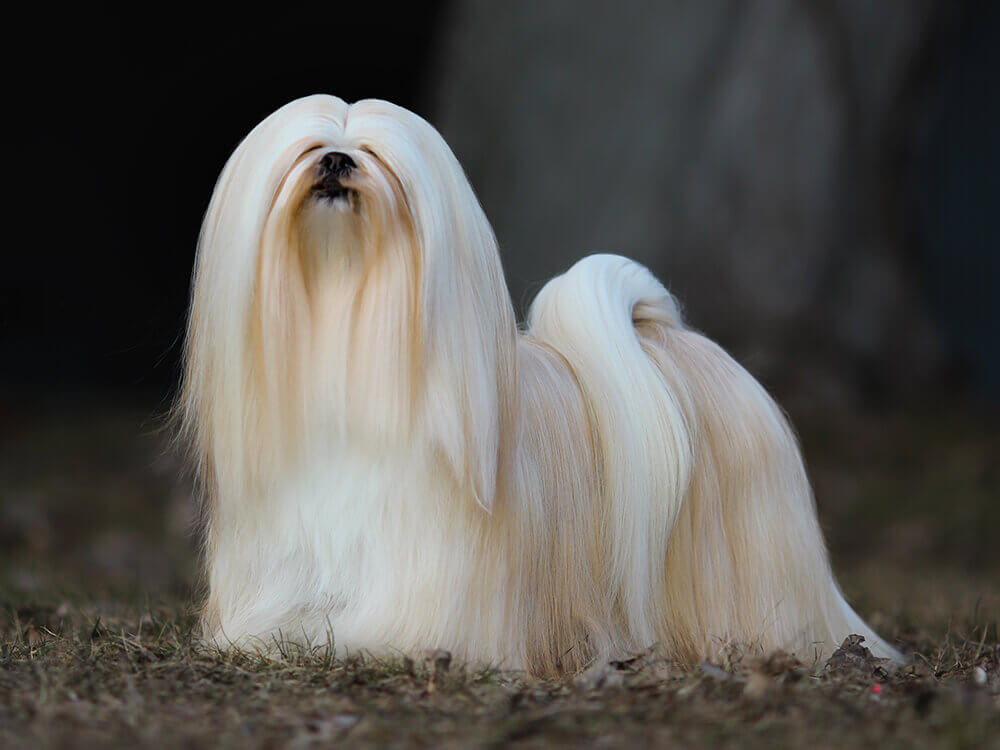
Lhasa Apso Breed Pictures
Vital Breed Stats
| Height: | 25 - 28 cm M | 25 - 28 cm F |
| Weight: | 6 - 7 kg M | 6 - 7 kg F |
| Breed Group: | Terrier Dog Group |
| Life Expectancy: | 13 - 15 years |
| KC Registered: | No |
Breed Characteristics
| Size: |  |
| Grooming: |  |
| Exercise Level: |  |
| Trainability: |  |
| Barking Level: |  |
| Good with Children: |  |
| Good with other pets: |  |
| Affectionate: |  |
| Protective: |  |
| Cost to Keep: |  |
Give a thumbs up if you love the Lhasa Apso

0
More About the Breed
History
The Lhasa Apso is of a Tibetan origin and takes the name of the holy city of Tibet, Lhasa. Its name is derived from Lhasa city and "apso" which means goat-like. Its primary function is to guard the homes of Tibetan nobility and Buddhist monasteries near the sacred city of Lhasa. Although Tibetan Mastiffs were utilised to guard the entrances, the Lhasa Apso serves as the burglar alarm when intruders get past the Tibetan Mastiffs.
It is believed that the Lhasa Apso is among the oldest recognised dog breeds in the world, dating as far back as 800 BC. In fact, it is also believed that Lamas (spiritual masters or high priests) can enter into the bodies of Lhasas. The Lhasa Apso is highly treasured that the only way to own one is to receive it as a gift to bring "good fortune and prosperity" to the receiver.
In 1933, a pair of Lhasas was given as a gift to C. Suydam Cutting who travelled to Tibet and met Thubten Gyatso, 13th Dalai Lama. Also at this period, one Lhasa Apso was already registered in England. It was in 1901 that Sir Lionel Jacob described and named the Lhasa as "Lhasa Terrier." It was only changed back to Lhasa Apso when the formal Lhasa Apso Club was founded in 1970. It was first recognised by the Kennel Club in 1908.
Appearance
Lhasa Apsos are small and sturdy, sporting heavy, lush coats that cover their entire body, long enough to almost reach the floor. They wear a beard, and a moustache and a patch of hair hang over the head, falling over their eyes but must not impede their vision. They have brown eyes, black nose and small pendant ears. In form, Lhasas must be longer than they are tall standing 23 to 28 centimetres and weighing 12 to 15 pounds. Lhasa Apso's tail is heavily feathered that it carries over its back.
When it comes to its coat, the Lhasa wears a heavy, straight, and very dense coat that comes in a variety of colours including black, red, white, and gold with several shadings.
Grooming
Although its lush coat is a beauty to behold, gorgeous in fact, grooming is a bit of a challenge. Grooming a Lhasa's coat is time-consuming and difficult. Unlike most breeds, the Lhasa will require daily brushing as well as bathing every two to four weeks. Most often, owners hire professional groomers to make sure the beauty of their coats is maintained.
Naturally, other grooming regimens must be included if you want to keep an overall healthy dog. Make sure to check the ears regularly for any signs of irritation or infection. Also, clean the ears to prevent wax build-up using a cotton ball and a vet-approved solution. Teeth should also be thoroughly brushed on a weekly basis to prevent tartar build-up and avoid gum disease. Nails should also be trimmed especially when it grows too long. You will know when you hear clicking sounds.
Temperament
Intelligence
Training-wise, the Lhasa Apso's intelligent but stubborn nature can make it hard to train. It is often happier when it can do its own thing and is known to turn a deaf ear to commands, depending on its mood. If is not put in its proper place, the Lhasa can quickly show a more dominant nature. In other words, this dog breed is not well-suited for first-time dog owners.
The Lhasa Apso is not good around dogs, when not properly socialised. It is often snippy with a suspicious and dominant nature. However, since it has a low prey drive, mixing small animals with a Lhasa does not necessarily end in disastrous results. It can co-exist with other animals given the right training. When it comes to children, it is better suited to households with older children who know how to handle this dog. Lhasas don't take kindly to rough play where they can be pushed around or mishandled. Supervision is a must during play.
Nutrition
- Senior and less active: up to 400 calories daily
- Typical adults: up to 450 calories daily
- Physically active/working dogs: up to 500 calories daily
Feeding
Health
Exercise
Cost of Ownership
Before you go and buy a Lhasa Apso, you need to ask yourself: Am I ready to get a dog? If your answer is yes without considering all aspects of dog ownership, it might not go so well. One particular aspect often neglected is financial stability. Once again, are you ready to raise a dog like the Lhasa Apso? Before you answer that, let us first look at an overview of what your budget will look like raising a dog with a 15-year lifespan.
You will spend anywhere between £250 and £750 to buy a Lhasa Apso puppy from a reputable breeder. When that's done, you will then have to search for an affordable pet insurance that fits your budget. Pet insurance is estimated to cost around £20 to £40 a month. On top of these is the food budget, which will set you back about £30 to £40 a month, excluding treats. Also, one of the most important cost is veterinary care that includes regular health checks, vaccinations, boosters and neutering/spaying. All these veterinary expenses can cost you around £800 a year. In total and on average, you will spend roughly around £60 to £90 a month to raise a Lhasa Apso.
Lhasa Apso Breed Highlights
- The Lhasa Apso is originally bred to be a guard dog.
- It is wary of strangers but very affectionate to its family.
- It is not ideal for first-time owners because it is difficult to housetrain.
- Lhasas are not the best choice for families with small children.
- They are not high energy dogs, best suited for owners with sedentary lifestyles.
- They are difficult to groom and may need a professional groomer.
